#antenna development engineer
Explore tagged Tumblr posts
Text
Tailored Antennas: Unlock Next-Level Signal Strength
In today’s fast-evolving world of wireless communication, antennas play a crucial role in enabling seamless connectivity across various industries. From telecommunications to aerospace, the demand for efficient and high-performing antennas has never been higher. While off-the-shelf antennas serve general applications, custom antenna design provides tailored solutions that cater to specific needs, ensuring optimal performance and reliability.

Why Choose Custom Antenna Design?
Off-the-shelf antennas are designed to meet general performance parameters, but they often fall short in unique or specialized applications. Custom antenna design allows for engineering antennas that align precisely with project requirements, whether for size constraints, frequency range, gain, or environmental conditions, wifi enhancer. Here’s why custom antenna solutions stand out:
1. Optimized Performance
Custom antennas are specifically designed to match precise frequency bands and environmental conditions. This optimization reduces interference, enhances signal reception, and improves overall efficiency.
2. Enhanced Durability
Industries such as defense, aerospace, and IoT demand robust antennas that can withstand harsh environmental conditions. Custom antennas can be designed with materials and enclosures that provide protection against extreme temperatures, moisture, and physical impact.
3. Compact and Space-Saving Designs
In applications like wearable devices, drones, or medical implants, space is limited. Custom antenna design allows for miniaturization without compromising performance, ensuring seamless integration into compact devices.
4. Better Integration with Devices
Custom antennas can be designed to fit specific enclosures or form factors, reducing installation complexities and improving device aesthetics.
5. Improved Efficiency and Cost Savings
Although custom antennas may require a higher initial investment, they reduce costs in the long run by improving performance, extending device lifespan, and reducing maintenance requirements.
The Process of Custom Antenna Design
The development of a custom antenna follows a structured approach to ensure that the final product meets performance expectations. Here’s an overview of the key steps involved:
1. Requirement Analysis
Understanding the project’s needs is the foundation of custom antenna design. Engineers analyze parameters such as frequency range, operating environment, size constraints, and performance goals.
2. Electromagnetic Simulation and Prototyping
Advanced simulation tools are used to model and optimize the antenna’s electromagnetic properties. Once the design is finalized, prototypes are developed for real-world testing.
3. Testing and Validation
Prototypes undergo rigorous testing in controlled environments to measure key performance metrics such as gain, impedance, and radiation patterns. Adjustments are made to enhance efficiency.
4. Manufacturing and Deployment
After successful testing, the antennas are manufactured using the best-suited materials and techniques. The final product is then integrated into its respective application.
Industries Benefiting from Custom Antenna Solutions
Custom antenna design is transforming multiple industries by offering tailored connectivity solutions. Some notable sectors include:
● Telecommunications: Optimized antennas for 5G networks, IoT, and smart cities.
● Aerospace and Defense: Secure and robust communication antennas for military applications.
● Healthcare: Miniature antennas for medical implants and remote patient monitoring.
● Automotive: Advanced antennas for connected cars and autonomous driving systems.
Conclusion
As the demand for high-performance wireless communication grows, custom antenna design is becoming a game-changer in various industries. By offering optimized, durable, and efficient solutions, custom antennas ensure seamless connectivity and superior performance tailored to specific applications. Whether for aerospace, healthcare, or IoT, investing in custom antenna design is a strategic move towards enhanced communication and technological advancement.
#uhf vhf antennas#wifi antenna booster#vhf antennas#antenna design company#antenna development engineer#external wifi booster#improve wifi signal#vhf antenna#wifi signal enhancer#iridium external antenna
0 notes
Text
unexpected company



shy alien!chan x human!reader warnings: blowjob, corruption kink kinda, aliens, monsterfuck(?), alternative anatomy, sub!chan listen this has no coherent lore or artistic purpose, it’s pure self indulgent filth aka shy alien channie gets a blowjob for the first time ever for the vibes think the avatar’s navi meets stitch meets bang chan.
moving slightly off grid to finally escape the noise of the city and live out your little house in the woods dream seemed peaceful. uneventful even, because the most that would happen was a hare visiting once in a few moons. that was until a little almond shaped spacecraft crashlanded meters away from your cabin, turning life upside down because not only did it scare the daylights out of you, there was also a pilot inside the ship.
his skin was tinted blue, eye scleras fully black, which, surprisingly... only made him less intimidating, somehow. the visitor was humanoid, slightly lankier than your average male, with a smooth, almost animal-like grace, somewhat primal yet contrasting with his outstanding intelligence and skill in both language and engineering.
when you’d first locked eyes with each other, it wasn’t fear or dread that struck you. on some intuitive and body language reading level, just by one look at your newfound alien company, you figured he was probably even more distressed and frightened than you were. so your initial response was laced with confusion and compassion instead. maybe, a sparkle of curiosity and suspicion, too.
you gave him water, tried to keep your own body language neutral and non-threatening, showing you were only trying to help and meant no harm.
this is how it started.
to answer the question of how it’s going, there’s definitely nuance.
first of all, he’s now living with you because he needs time to patch up his spacecraft. with limited tech resources available here on earth, it’s taking longer than it could have.
second of all, he started speaking. he introduced his name to you first, but it sounded like a combination of sounds your mind couldn’t even grasp to then repeat. it was long, tongue twisting and unclear, so you settled on a simpler alternative that phonetically resembled the original name — chan.
chan picked up basic english in a matter of days and was clearly of some further evolved species than humans.
he enjoyed pineapple juice and noodle soups, and refused to consume anything else that wasn’t those two options.
he also had little antennae on the top of his head, that you soon figured were extremely sensitive and almost sacred of a body part, because when you reached to touch them once, he hissed for a warning and sneered as his body tensed up in a reflex response.
channie wasn’t hostile at all, though. he respected you and your space, keeping his head down and not making much sound, only asking for things when he absolutely needed them. it seemed like where he came from — was an organized and neat, highly developed society that honored manners, respect, knowledge and… modesty? you weren’t sure if it was the right way to describe this certain feeling you were getting. maybe, channie was just… shy. which, if you were being honest with yourself, stirred something inside of you that only fueled the desire to get to know him better. closer.
“screwdriver, where?” chan asks, popping his head into the living room where you’re now resting with a book in your hands.
“ahh, not sure? maybe look in the garage, or the kitchen drawers?” you respond and briefly glance at the clock to then realize that he’s been up since 6 in the morning and still haven’t had a breather.
“chan, aren’t you tired? maybe have a little break?” you add a second before he disappears again, and he stops, perking up his antennae and giving you an almost confused glance.
“need repair ship. get home!” chan waves his hands as he speaks with a thick adorable accent.
“i know. but you need rest, too. it’s okay to take a break for an hour.”
“and do what?”
“rest.” you repeat gently, putting away a long forgotten book and patting the sofa, as if inviting him to sit and join you.
he hesitates but listens, probably out of politeness since you’re the host and he’s the guest, and it would be rude to just walk away from you. as he’s sitting on the sofa, it’s evident that he’s waiting for some sort of instruction or explanation from you, unsure what resting really means.
“i can help you relax if you let me,” you propose carefully, leaning closer and putting your hand on his thigh, gently caressing him with soothing repetitive motions.
chan blinks, naive and clueless, but he can admit the touch feels nice, so his body loosens up a little as he sinks further into the pillows.
there’s a certain level of trust between you already, and you know he isn’t scared or concerned around you, which pushes you further to test out the waters. you slide your palm a little higher to his crotch, and he immediately turns his head to you.
“why touch?” chan asks with sincere confusion.
“because it feels good?”
now it's your turn to be confused. has he never had sex before? is sex even a thing where he’s from?
“feel good? dunno, chan never touch there,” he replies, shrugging his shoulders and then looking down at his own groin.
oh.
you swallow and try to keep your cool, even though a strange and probably inappropriate wave of excitement jolts through your body at the news.
“i can show you. it can feel very good and relaxing. you don’t have to worry, it’s not… painful or anything. it’s nice. can i show you?” you explain and try to sound as reassuring as you can, reading his facial expressions at the same time.
while you’re studying him so closely, you can’t help but notice how ungodly, unearthly pretty he actually is. his grown out black locks and his sharp eyebrows give him an almost disheveled look yet he still looks so put together, so deeply intelligent. your gaze trails lower and stops at his lips. they’re a darker tint of blue, plush and perfectly shaped. you can tell they’re soft and tender just by looking at them.
his nailbeds are the same dark blue as his lips, and it gives an impression of matching lipstick and nail polish, kind of rebellious and cute, except it’s just his natural body colors. refreshing.
he’s well built, too. like he can easily climb a tree if he needs to. like he will confidently pilot a heavy aircraft with stiff gears and controls.
“you can show,” his voice takes you out of your haze, and you refocus on his eyes and scoot a little closer, so that now your noses are almost touching.
“you can trust me. i won’t hurt you,” you reassure him one last time before planting a gentle kiss on his lips. you hear his breath hitch. gosh.
your movements are slow, patient and soft. the last thing you’d want is to scare him.
as you undo his pants (the ones he was originally wearing. you washed them after the crash. the fabric is weird and the clasp is some smart unusual shape you’d never seen before), he shifts in place and jerks his hips nervously. this is the first time you see him blush, and it’s an even prettier look than his regular state because the tips of his pointy ears and his cheeks change to a deep violet color.
chan’s hot to the touch too, and if you didn’t know it’s his natural body temperature, you’d think he's running a fever incompatible with life. his skin is literally burning up which, in contrast with its cold color, makes your brain shortcircuit and buffer every time you feel him.
he’s not wearing any underwear, just his strangely tailored pants, and when you cover his cock with your palm, you gasp out of surprise at what it feels like.
it’s different. it’s definitely different.
the shape is closer to a tentacle than a regular cylinder length. it’s twitchy and almost.. alive. flexible and extremely responsive to every brush of your hand.
under a little dark blue tip it’s slightly ribbed and bumpy, hardened but still feels like flesh.
the antennae on his head begin to tremble, and chan’s breath quickens in a matter of seconds. you both glance at each other confused but with a distinct spark of interest. it’s new to both of you but something nudges you two to keep going.
you slowly slide onto the floor and get on your knees in front of him, pushing his legs apart and situating yourself comfortably while his cock is out, on full display. sensitive and starting to leak some sort of thick and sticky slick from its slit.
“a-aah—what-” chan stumbles over his own words, clearly too heated and disoriented to be speaking a language he’d only just learned.
“sh-h, it’s okay. i’ll touch, and you’ll feel good” you whisper as you lightly squeeze the base of his length, trying to pump him up and down and coat him with his own precum.
at this point, you’re done fighting your curiosity, so you lick at the head of his cock to taste it, and it takes you aback. it’s… not salty. in fact, it’s the opposite, and reminds you of something close to burnt sugar. kind of sweet, but rich, deep, heavy and with a pinch of something you can’t quite name.
you take the entire tip into your mouth and suck on it, creating a little vacuum pull with your cheeks, to which chan jolts and almost coughs on his own suppressed moan.
"do you want me to continue or do you want me to stop?" you ask to make sure.
"no—not stop... continue. please?" he shakes his head and furrows his eyebrows, still flushed with purple hued blush.
he doesn’t need to ask twice. it’s all the confirmation you need, so you begin to suck again, bobbing your head and trying to take him in deeper each time. he fills your mouth nice and full, hot like gentle lava and textured like a dream come true.
you can only wonder how good and stimulating it must feel against your cunt, if it feels this good against the insides of your cheeks.
chan’s cock twitches and pulsates for you, its tip pressing against the back of your throat and the roof of your mouth as if it’s also exploring you. as if chan wants to feel up your mouth, map it out with his sensitive part and push into you some more, mutually test how far he can go.
at some point, you’re not even sure who’s fucking who. because as you grow more confident and properly sink down on him with your mouth, chan’s playing with you back, whether he's even aware he's doing it or not—you can't really tell. his heavy length presses on your tongue which makes more saliva drip down your chin. he rubs against the velvety insides of your cheeks and pushes at them with his curious tip. one thrust he forces himself in too far, and you gag on it with a lewd sound that makes your own cunt clench.
the little bumps on his cock feel even more prominent now, almost massaging your lower lip with each push inside your mouth, with each slide down your tongue into your throat. somehow, even though you were the one starting it, you no longer feel much in control, now relaxing your jaw and mindlessly allowing chan to use and study you.
chan fully melts into the couch and lets himself get vocal, still tugs at the fabric of the sofa with his fingers as his antennae go limp and frizzy from new overwhelming sensations.
a release catches both of you off guard as his cock shoots a fat warm load right down your throat. you barely manage to swallow it in time, and it feels similar to drinking hot honey milk in one gulp, only slightly thicker and silkier.
his tentacle-y length falls onto his exposed stomach with an obscene wet slap, and chan tries to look down at you, his eyes unfocused and drunk-like.
“did it feel good?” you whisper, hoarse and raspy, licking your lips and swallowing once again.
“yes—feel good... good,” he replies with a nod, visibly spent and still out of it.
the image makes you chuckle and smile proudly.
“do again?” chan asks with a tint of hope.
“what, right now?!”
“no, no. no now. do again later?”
you snort and tilt your head to the side, eyeing him and, once again, thinking about how cute he is in his blissful unawareness and inexperience.
“sure.”
#stray kids x reader#bang chan x reader#skz imagines#skz x reader#skz x you#chan x reader#my fic#bang chan x you#chan x you#skz fanfic#stray kids x you#stray kids fanfic#bang chan hard hours#stray kids fic
292 notes
·
View notes
Text
Mariner program
The Mariner program was conducted by the American space agency NASA to explore other planets. Between 1962 and late 1973, NASA's Jet Propulsion Laboratory (JPL) designed and built 10 robotic interplanetary probes named Mariner to explore the inner Solar System - visiting the planets Venus, Mars and Mercury for the first time, and returning to Venus and Mars for additional close observations.

The program included a number of interplanetary firsts, including the first planetary flyby, the planetary orbiter, and the first gravity assist maneuver. Of the 10 vehicles in the Mariner series, seven were successful, forming the starting point for many subsequent NASA/JPL space probe programs.

The name of the Mariner program was decided in "May 1960-at the suggestion of Edgar M. Cortright" to have the "planetary mission probes ... patterned after nautical terms, to convey 'the impression of travel to great distances and remote lands.'" That "decision was the basis for naming Mariner, Ranger, Surveyor, and Viking probes."

Each spacecraft was to carry solar panels that would be pointed toward the Sun and a dish antenna that would be pointed at Earth. Each would also carry a host of scientific instruments. Some of the instruments, such as cameras, would need to be pointed at the target body it was studying. Other instruments were non-directional and studied phenomena such as magnetic fields and charged particles. JPL engineers proposed to make the Mariners "three-axis-stabilized," meaning that unlike other space probes they would not spin.
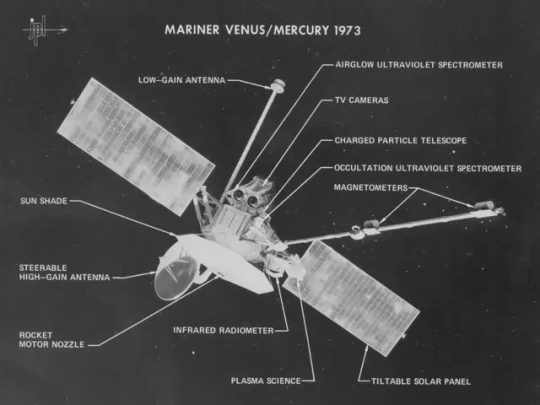
Mariner 1 and Mariner 2
Mariner 1 and Mariner 2 were two deep-space probes making up NASA's Mariner-R project. The primary goal of the project was to develop and launch two spacecraft sequentially to the near vicinity of Venus, receive communications from the spacecraft and to perform radiometric temperature measurements of the planet. A secondary objective was to make interplanetary magnetic field and/or particle measurements on the way to, and in the vicinity of, Venus.
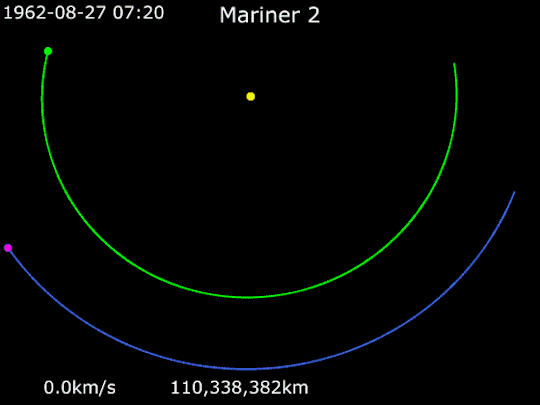
Animation of Mariner 2's trajectory from August 27, 1962, to December 31, 1962. Mariner 2 · Venus · Earth.
Mariners 3 and 4
Sisterships Mariner 3 and Mariner 4 were Mars flyby missions.
Mariner 3 was launched on November 5, 1964, but the shroud encasing the spacecraft atop its rocket failed to open properly and Mariner 3 did not get to Mars.
Mariner 4, launched on November 28, 1964, was the first successful flyby of the planet Mars and gave the first glimpse of Mars at close range
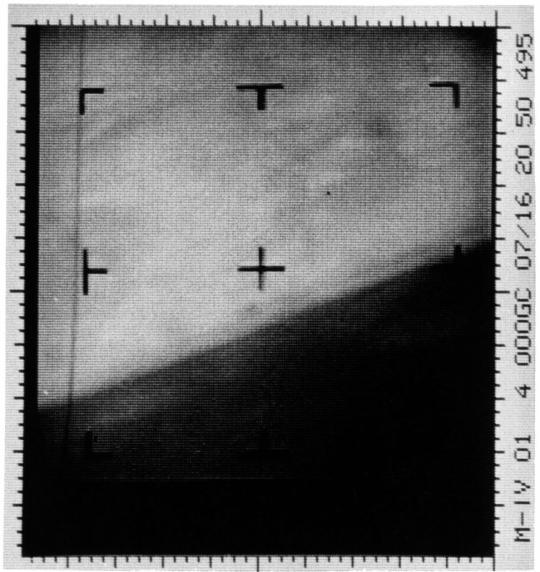
This archival image is an enhanced contrast version of the first Mars photograph released on July 15, 1965. This is man's first close-up photograph of another planet -- a photographic representation of digital data radioed from Mars by the Mariner 4 spacecraft. Data was either sent to Earth immediately for acquisition or stored on an onboard tape recorder for later transmission.
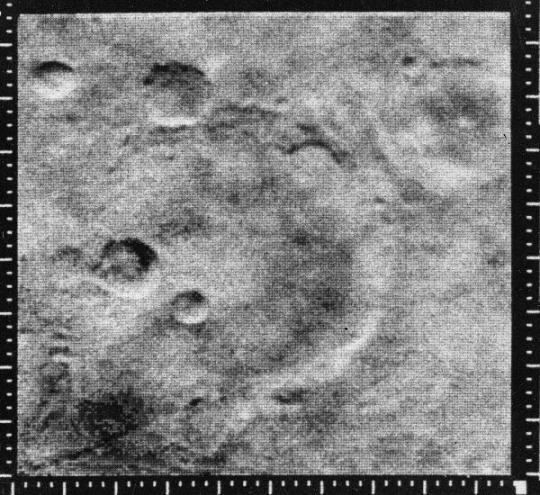
The pictures, played back from a small tape recorder over a long period, showed lunar-type impact craters (just beginning to be photographed at close range from the Moon), some of them touched with frost in the chill Martian evening.
Mariner 5

The Mariner 5 spacecraft was launched to Venus on June 14, 1967, and arrived in the vicinity of the planet in October 1967. It carried a complement of experiments to probe Venus' atmosphere with radio waves, scan its brightness in ultraviolet light, and sample the solar particles and magnetic field fluctuations above the planet.
Mariners 6 and 7
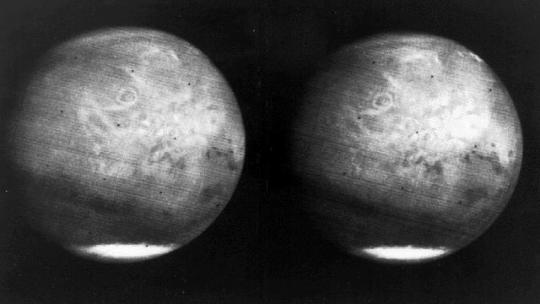
Mariners 6 and 7 were identical teammates in a two-spacecraft mission to Mars. Mariner 6 was launched on February 24, 1969, followed by Mariner 7 on March 21, 1969. They flew over the equator and southern hemisphere of the planet Mars.
Mariners 8 and 9
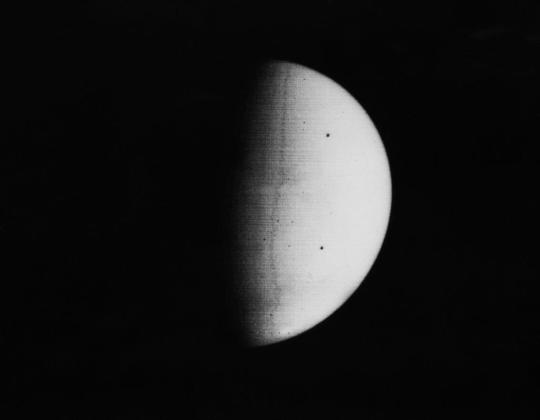
Mariner 8 and Mariner 9 were identical sister craft designed to map the Martian surface simultaneously, but Mariner 8 was lost in a launch vehicle failure. Mariner 9 was launched in May 1971 and became the first artificial satellite of Mars.
Mariner 10

The Mariner 10 spacecraft launched on November 3, 1973, and was the first to use a gravity assist trajectory, accelerating as it entered the gravitational influence of Venus, then being flung by the planet's gravity onto a slightly different course to reach Mercury. It was also the first spacecraft to encounter two planets at close range, and for 33 years the only spacecraft to photograph Mercury in closeup.
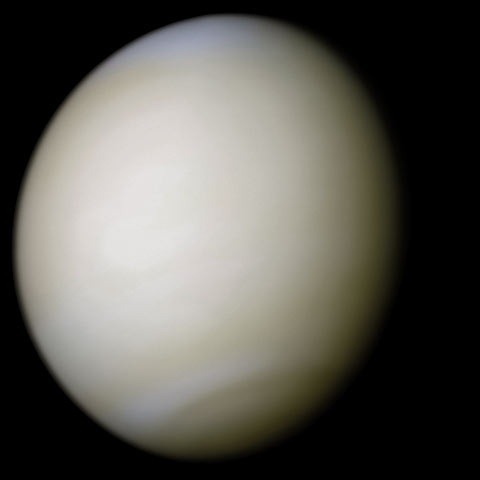
Venus in real colors, processed from clear and blue filtered Mariner 10 images

Mariner 10's photograph of Venus in ultraviolet light (photo color-enhanced to simulate Venus's natural color as the human eye would see it)
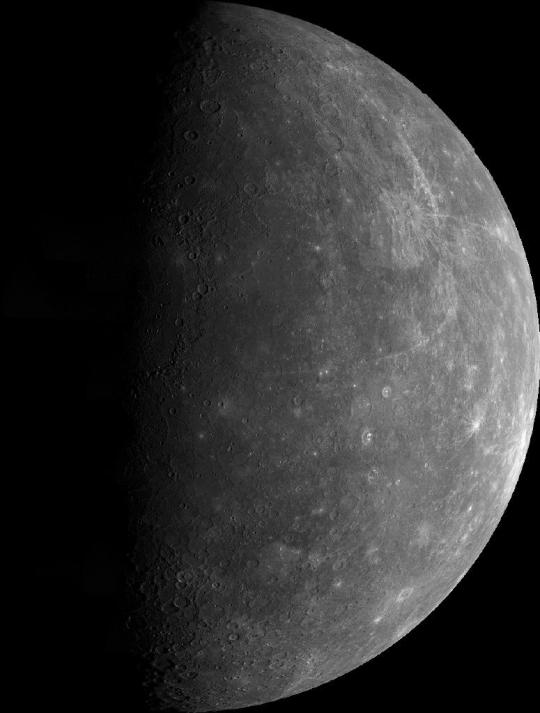
This mosaic shows the planet Mercury as seen by Mariner 10 as it sped away from the planet on March 29, 1974.
source x, x | images x
#mercurio#mercury#venus#mars#marte#astronomy#astronomia#space#solarsystem#sistemasolar#universe#universo#mariner#mission#space exploration
268 notes
·
View notes
Text
A Summer with the Immortal is out!

[Image description: A book cover. It’s mostly light green. In the centre is a red daylily with six petals and a long stamen shaped like a three-pronged radio antenna. Title: A Summer with the Immortal. Author: Paris Vivian. End ID.]
The Tachytelozoic Era is an age of constant change. New species appear every day. Advanced biotechnology, floral telecommunication and fungal computing and algal engineering, is everywhere. The country of Kenor, where it all began, is now home to the Verdantland - a brand-new rainforest full of altered plants and animals. Taryn Viato, a biology student at Kenor's most famous university, has been entrusted with an important task over her summer break. Acacia, the city's resident celebrity-turned-recluse (who also happens to be biologically immortal), has asked her to find the reason why his radio-lilies have been wilting. As she investigates, her own life starts changing faster than the organisms around her. An expedition to an ancient ruin site, a brush with the growing anti-Verdantland movement, and a spark of new romance all await. The mystery of the wilting lilies may not be the only one Taryn solves this lively summer. Nor do the problems she has to solve remain so small-scale. As the current of transformation rushes ever onwards, sweeping her to shores beyond her imagining, she is made to reckon with the natures of change and changelessness themselves.
After four long years, my debut novel A Summer with the Immortal is finally out! If you like:
Science fantasy
Living technology
A developing F/F romance with a meet-cute
Ancient ruins holding strange sights
An autistic MC and LI written by an autistic author
Environmental politics
Stories about the search for surety in an ever-changing world
this book is for you!
Link to purchase:
#A Summer with the Immortal#Verdantland Trilogy#science fantasy#ecofiction#science fiction#fantasy#sapphic fiction#wlw fiction#autistic characters#autistic representation#self publishing#writeblr#writers on tumblr#fantasy biology#speculative biology
21 notes
·
View notes
Text
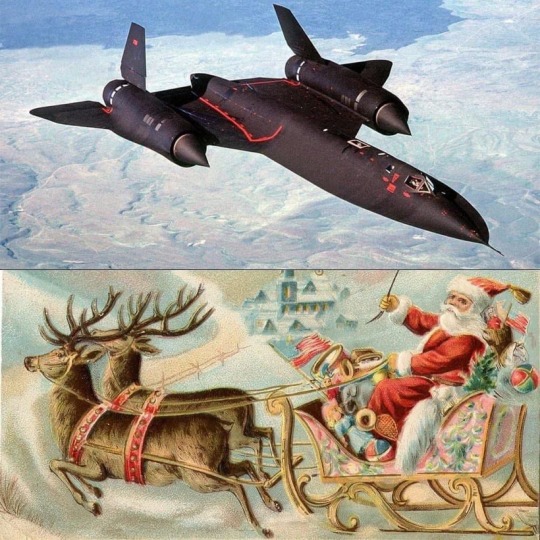
The SR-71, unofficially known as the “Blackbird,” is a long-range, advanced, strategic reconnaissance aircraft developed from the Lockheed A-12 and YF-12A aircraft. The first flight of an SR-71 took place on Dec. 22, 1964, and the first SR-71 to enter service was delivered to the 4200th (later 9th) Strategic Reconnaissance Wing at Beale Air Force Base, Calif., in January 1966.
Throughout its nearly 24-year career, the SR-71 remained the world’s fastest and highest-flying operational aircraft. From 80,000 feet, it could survey 100,000 square miles of Earth’s surface per hour.
In 1969, on the Night Before Christmas, my father Colonel Richard “Butch” Sheffield, SR-71 Blackbird Reconnaissance Systems Officer (RSO), flew a North Pole night mission. To honor him I’m going to share this story.
This is the Night Before Christmas as told by a Habu.
Late In 1969, shortly after I was crewed with Bob Spencer, we were tasked to fly a night mission to the North Pole. Night missions were very rare in those days because of St. Martins crash (summer of 1967) at night when navigation system failed. We were one of the most experienced SR crews and we were told that the Russians were doing something with our submarines at night at a station they had built on the ice near the North Pole. It was believed that our Side Looking, High Resolution Radar System could gain valuable intelligence by spying on the unsuspecting Russians in the middle of the night. I found out a few years ago what the Russians were doing, setting up acoustic sensors so they could track our submarines under the ice cape.
We launched from Beale at night, flew north to Alaska and refueled over the central part on a Northern heading. Once we were full of fuel, we lit the afterburners and climbed to about seventy five-thousand feet heading north to the ice station. The tanker was briefed to continue to fly north in case we lost an engine. There was no place to land and our emergency procedure was to turn around 180 degrees and do a head on rendezvous with the tanker on one engine.
As we departed Alaska heading North with the after burners blazing, I looked out the window at the barren land and ice. I could see well because of star light. We had no moon that night. The thought came to my mind, “this is really risky business,” and if anything goes wrong they will never find us. Nothing went wrong, I turned on the Side Looking Radar (SLR), looked at the location and took the images. Returned to Alaska and refueled from the tanker and returned to Beale.
The SLR had a great resolution plus the speed of the SR traveling three thousand feet per second caused the antenna to believe it was much longer. The SLR could image out to eighty miles to the side of the SR so if the site was manned they would not hear our sonic boom. The CIA found out that the station was not manned during the worst part of winter. When not manned, the CIA landed a few people by parachute to find out what was going on at the station. They found everything to include code books. The men were recovered by being snatched up into a low flying aircraft.
This event has been documented by book and a movie.
The night of the mission, the family had gone to bed at the regular time. I got out of bed, went to the flight line, flew the mission and returned home to the bed. The next morning as the family sat around the table having breakfast ,I thought to myself, no one would believe where I was last night, the North Pole right before Christmas?
Be sure to check out Linda Sheffield Miller (Col Richard (Butch) Sheffield’s daughter, Col. Sheffield was an SR-71 Reconnaissance Systems Officer) Born into the wild blue yonder Habubrats
@Habubrats71 via X
#sr 71#sr71#sr 71 blackbird#blackbird#aircraft#usaf#lockheed aviation#skunkworks#aviation#mach3+#habu#reconnaissance#cold war aircraft
30 notes
·
View notes
Text
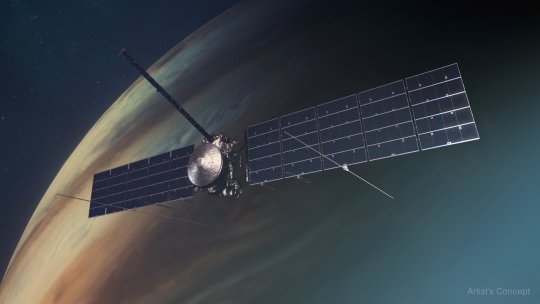
8 Things to Know About NASA’s Mission to an Ocean Moon of Jupiter
The first NASA spacecraft dedicated to studying an ocean world beyond Earth, Europa Clipper aims to find out if the ice-encased moon Europa could be habitable.
NASA’s Europa Clipper spacecraft, the largest the agency has ever built for a planetary mission, will travel 1.8 billion miles (2.9 billion kilometers) from the agency’s Kennedy Space Center in Florida to Europa, an intriguing icy moon of Jupiter. The spacecraft’s launch period opens Thursday, Oct. 10.
Data from previous NASA missions has provided scientists with strong evidence that an enormous salty ocean lies underneath the frozen surface of the moon. Europa Clipper will orbit Jupiter and conduct 49 close flybys of the moon to gather data needed to determine whether there are places below its thick frozen crust that could support life.
Here are eight things to know about the mission:
1. Europa is one of the most promising places to look for currently habitable conditions beyond Earth.
There’s scientific evidence that the ingredients for life — water, the right chemistry, and energy — may exist at Europa right now. This mission will gather the information scientists need to find out for sure. The moon may hold an internal ocean with twice the water of Earth’s oceans combined, and it may also host organic compounds and energy sources under its surface. If the mission determines that Europa is habitable, it would mean there may be more habitable worlds in our solar system and beyond than we have imagined.
2. The spacecraft will fly through one of the most punishing radiation environments in our solar system — second only to the Sun’s.
Jupiter is surrounded by a gigantic magnetic field 20,000 times stronger than Earth’s. As the field spins, it captures and accelerates charged particles, creating radiation that can damage spacecraft. Mission engineers designed a spacecraft vault to shield sensitive electronics from radiation, and they plotted orbits that will limit the time Europa Clipper spends in most radiation-heavy areas around Jupiter.
3. Europa Clipper will orbit Jupiter, studying Europa while flying by the moon dozens of times.
The spacecraft will make looping orbits around Jupiter that bring it close to Europa for 49 science-dedicated flybys. On each orbit, the spacecraft will spend less than a day in Jupiter’s dangerous radiation zone near Europa before zipping back out. Two to three weeks later, it will repeat the process, making another flyby.
4. Europa Clipper features NASA’s most sophisticated suite of science instruments yet.
To determine if Europa is habitable, Europa Clipper must assess the moon’s interior, composition, and geology. The spacecraft carries nine science instruments and a gravity experiment that uses the telecommunications system. In order to obtain the best science during each flyby, all the science instruments will operate simultaneously on every pass. Scientists will then layer the data together to paint a full picture of the moon.
5. With antennas and solar arrays fully deployed, Europa Clipper is the largest spacecraft NASA has ever developed for a planetary mission.
The spacecraft extends 100 feet (30.5 meters) from one end to the other and about 58 feet (17.6 meters) across. That’s bigger than a basketball court, thanks in large part to the solar arrays, which need to be huge so they can collect enough sunlight while near Jupiter to power the instruments, electronics, and other subsystems.
6. It’s a long journey to Jupiter.
Jupiter is on average some 480 million miles (about 770 million kilometers) from Earth; both planets are in motion, and a spacecraft can carry only a limited amount of fuel. Mission planners are sending Europa Clipper past Mars and then Earth, using the planets’ gravity as a slingshot to add speed to the spacecraft’s trek. After journeying about 1.8 billion miles (2.9 billion kilometers) over 5½ years, the spacecraft will fire its engines to enter orbit around Jupiter in 2030.
7. Institutions across the U.S. and Europe have contributed to Europa Clipper.
Currently, about a thousand people work on the mission, including more than 220 scientists from both the U.S. and Europe. Since the mission was officially approved in 2015, more than 4,000 people have contributed to Europa Clipper, including teams who work for contractors and subcontractors.
8. More than 2.6 million of us are riding along with the spacecraft, bringing greetings from one water world to another.
As part of a mission campaign called “Message in a Bottle,” the spacecraft is carrying a poem by U.S. Poet Laureate Ada Limón, cosigned by millions of people from nearly every country in the world. Their names have been stenciled onto a microchip attached to a tantalum metal plate that seals the spacecraft’s electronics vault. The plate also features waveforms of people saying the word “water” in over 100 spoken languages.
More About Europa Clipper
Europa Clipper’s three main science objectives are to determine the thickness of the moon’s icy shell and its interactions with the ocean below, to investigate its composition, and to characterize its geology. The mission’s detailed exploration of Europa will help scientists better understand the astrobiological potential for habitable worlds beyond our planet.
Managed by Caltech in Pasadena, California, NASA’s Jet Propulsion Laboratory leads the development of the Europa Clipper mission in partnership with the Johns Hopkins Applied Physics Laboratory in Laurel, Maryland, for NASA’s Science Mission Directorate in Washington. The main spacecraft body was designed by APL in collaboration with JPL and NASA’s Goddard Space Flight Center in Greenbelt, Maryland, NASA’s Marshall Space Flight Center in Huntsville, Alabama, and NASA’s Langley Research Center in Hampton, Virginia. The Planetary Missions Program Office at Marshall executes program management of the Europa Clipper mission.
NASA’s Launch Services Program, based at Kennedy, manages the launch service for the Europa Clipper spacecraft, which will launch on a SpaceX Falcon Heavy rocket from Launch Complex 39A at Kennedy.
45 notes
·
View notes
Note
Hello, this is callsign Scrappy reporting with Kid and Khopesh. Hello. We require your expertise, wizard. Yeah, what Khopesh said. We kind of uh.. assumed you're the local "Weirdness expert" based off what we've seen on the omninet, and after this whole "NHP-controlled ship loaded with greywash attacks us" we've been having some.. small issues. Now, for clarification, we pilot a Chomolungma with a plentiful dose of goblin licensing. Long story. But uh.. Well, you see. Due to some.. extensive experimentation with our ability to influence machinery, I was outfitted with a subjectivity enhancement suite. I see the sensor-scape better that way and my... hold over all sorts of systems improved since then. But it has come to my attention that there's.. nubs on my hardsuit. I've been in it for way too long during that whole mess, so that might have something to do with it. We do not believe it should be doing that. We have not altered the hardsuit in any meaningful way. We believe we've somehow managed to pass on goblin code to the hardsuit, contaminating it. We would like Your opinion, machinist.
[Below is an attached image of a stealth hardsuit- and indeed, it has slight nubs present on its arms, back and back of the head.]
>>OH HI!!!!! Hi it's cool people know me!!!! I think I can definitely help with this :3 I'm not too up on chassis engineering but I've been making due since people only really bring me chassis nowadays.
>>As far as I can tell, Goblin liturgicode is actually pretty heavily contagious and tends to infect hardsuits that come into contact with it!!! The development of those kinds of nubs on the plating is actually the beginnings of a Goblin's sensor array, the kind of spikes or antennae that you usually see on frames in the PG. This is kinda what happened to my hardsuit!!! The circumstances around mine was way different, though.
>>So!!!! It seems like you're a Goblin pilot now :3 congratulations!!!! As of now, the Goblin should still function as a hardsuit if you want to keep your Chomolungma, but as the sensor array starts growing in properly it'll develop its own systems that won't play nice with other computers. Then, you'll have both a fully formed Goblin and a Chomolungma!!! You can print a new hardsuit once that happens and keep piloting as normal, but be aware that the liturgicode will probably keep infecting any hardsuit you use in the Chomolungma and you'll need continuous replacements.
11 notes
·
View notes
Text
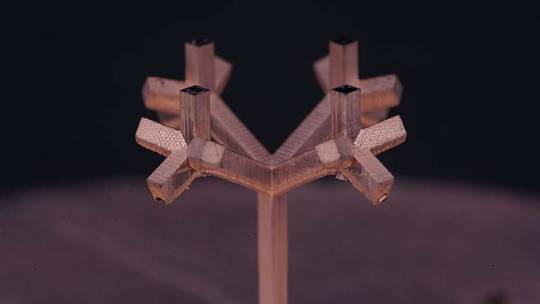
Engineers 3D print tiny, intricate antennas
Today, nearly all personal electronic devices rely on antennas to send and receive data. In fact, demand is also rising for lightweight antennas for new applications, including the latest in 5G/6G networks, advanced wearable devices and aerospace applications like CubeSats. However, standard manufacturing techniques have limited the structural complexity and use of multiple materials that would unlock still more features and capabilities from antennas. Now, a team led by Xiaoyu (Rayne) Zheng—associate professor in UC Berkeley's Department of Materials Science and Engineering and faculty co-director of Berkeley Sensors and Actuator Center (BSAC) and the Jacobs Institute for Design Innovation—has developed a new 3D printing/additive manufacturing platform that offers "unparalleled flexibility in antenna design and the capability for rapid printing of intricate antenna structures."
Read more.
12 notes
·
View notes
Text
Space Shuttle: Canadarm
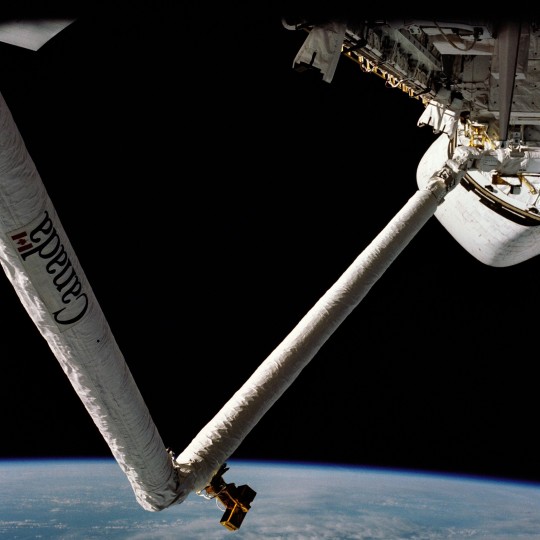
Officially named the Shuttle Remote Manipulator System, or SRMS. "In 1969, Canada was invited by the National Aeronautics and Space Administration (NASA) to participate in the Space Shuttle program. At the time what that participation would entail had not yet been decided but a manipulator system was identified as an important component. Canadian company DSMA ATCON had developed a robot to load fuel into CANDU nuclear reactors; this robot attracted NASA's attention. In 1975, NASA and the Canadian National Research Council (NRC) signed a memorandum of understanding that Canada would develop and construct the Canadarm.
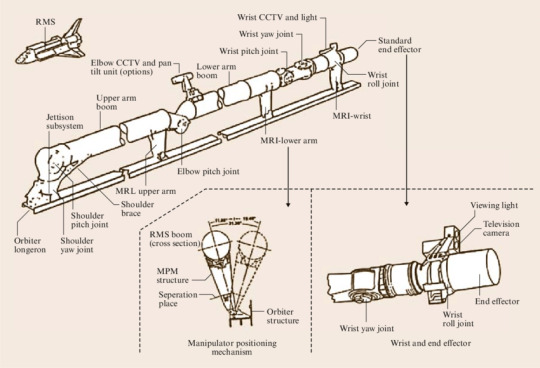
NRC awarded the manipulator contract to Spar Aerospace (now MDA). Three systems were constructed within this design, development, test, and evaluation contract: an engineering model to assist in the design and testing of the Canadarm, a qualification model that was subjected to environmental testing to qualify the design for use in space, and a flight unit."
"The Remote Manipulator System is plugged on a side panel (left side) of the pyaload bay. The shoulder is on the front (near the cabin) and 15.3 m long (35.7 cm of diameter). It is fasten by three points on the payload bay. It could have been plugged on the right side of the Orbiter but it has never be done because the Ku antenna must be moved. Only one arm can be controlled by the crew (rear wall), even if the wires are already plugged to control two.
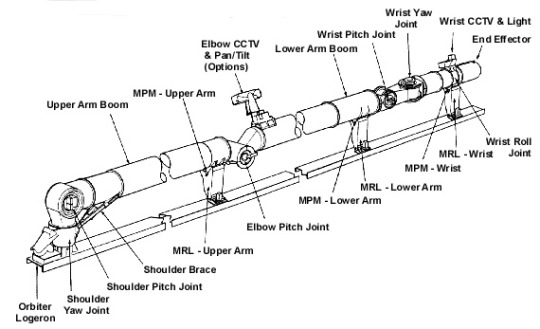
Its weight is 411 kg on Earth (carbon fibre), it can move payload of 29 tons in orbit. But it can't move its own weight on Earth, so to test it, it was lay on wheels. Equipped with video camera (one on the elbow and one wrist), it can move payload, bring them back or even act as a ladder for the astronauts during the EVAs. Finally, due to its high mobility it can also be used to look at different parts of the Orbiter."

"The first Canadarm was delivered to NASA in April 1981. Astronaut Judith Resnik developed the NASA software and onboard operating procedures for the system. In all, five arms – Nos. 201, 202, 301, 302, and 303 – were built and delivered to NASA. Arm 302 was lost in the Challenger accident."
source, source, source, source
NASA ID: STS002
70 notes
·
View notes
Note
Please go into detail about the feld computers
Okay so! We get quite a bit of information about the Feld Playback Experiment, a lot more than I realized before writing this post. The interface of the game (menus, dialogue engine) is actually designed to look like its on a Feld computer. Plenty of other people have talked about that, so I'm not going to go into it here, but I will drop this archived post from the developer's blog for those who are interested.
One thing I do want to highlight from that post:
This computer uses long strips of film for feedback (projection), memory (storing on magnetic tape) and interfacing (submit commands in handwriting) purposes
The strips of film for feedback and the magnetic tape storage are what I was expecting. But using handwritten commands for input was not on my radar! This would be what's called offline handwriting recognition, where text is converted by the computer after it's written (as opposed to online, where you use something like a stylus on a screen and the computer interprets it as you're writing). This is comparatively pretty difficult to achieve, and very error-prone, as everyone's handwriting looks slightly different. Most modern versions of this use machine learning techniques, but I'm assuming these computers used very basic character extraction and recognition engines.
Trant is the only in-game source we get for the Feld computers. And after doing some digging I found him saying something similar:
"As I was saying, the device itself was very elegant, fragile even. One could write directly on the tape using a special chemical solution. The machine would then analyze the handwriting, perform operations and project output onto a white screen. It was a beautiful, delicate thing."
I initially interpreted him saying they "perform operations and project output" to mean that they can process internally, unlike radiocomputers. But this post from the developers is making me think otherwise (thanks @sollandan for sharing this on my other post!):
"These machines have on-air processing. Large prime number stations criss-cross the air. Advanced tape computers use arrays of antennas to sieve through their calculations to perform advanced calculus on site: to run programmes and communicate between the remote corners of the world."
The advanced tape computers being referred to here have to be the Feld computers. I'm still not sure how this kind of processing would work. As far as computing goes, prime numbers are used primarily in cryptography. Maybe their version of 'processing' somehow involves decrypting? People have theorized that the world in Disco Elysium is made of information. If all the information already exists, maybe it's just a matter of decoding it? I'm honestly just spitballing here, but I'd love to hear other people's theories.
Regardless of how they work, it seems pretty clear to me that the Feld computers are meant to parallel the rise of digital personal computers in our world. Like how Trant described them here:
"An elegant folding mechanism of rollers and ferrotape ribbons, portable enough to be a take-it-home solution, revolutionizing business machines, possibly even bringing them to the average consumer."
This reads almost exactly like promotional material for early home computers made by IBM, Apple and such. (Side note: 'ferrotape' here refers to ferric-oxide coated tape, used for magnetic tape storage and popularized for use in computers by IBM in the 50s.)
But in Disco Elysium, this revolution never took place. Computers never made it to the average consumer, as is clearly demonstrated by even the RCM having only limited access to radiocomputers. The only characters I know of with access to computers are Soona (obviously) and Trant (plus his kid), who seems to be much wealthier than the average citizen of Revachol. The thematic significance of this form of communication never becoming available to the masses is not lost on me.
That said, I think ending this on one of the most interesting hints we get on what happened to the Feld Playback Experiment is appropriate:
YOU - "Why did the revolutionaries destroy it?" TRANT HEIDELSTAM - "Who knows? Maybe it was an accident, or maybe they didn't want the technology to end up in the wrong hands. Either way -- they're all gone now, all three versions of the prototype. Nothing but debris and ashes remains inside that building." He takes a step back; the boardwalk creaks mournfully in the wind. SHIVERS - Two seagulls circle in the sky. You look up and think: really? Or was there a fourth prototype that remains hidden in the mausoleums below Coal City?
#thanks for asking!!#this was a great excuse to spend way too much time researching fake computers#and again i'd love to hear other people's thoughts!!#cyan.txt#disco elysium
67 notes
·
View notes
Text
The Colombian navy on Wednesday announced its first seizure of an unmanned narco-submarine equipped with a Starlink antenna off its Caribbean coast.
The vessel was not carrying drugs, but the Colombian navy and Western security sources based in the region told AFP they believed it was a trial run of an unmanned vessel by a cocaine trafficking cartel.
Manned semi-submersibles built in clandestine jungle shipyards have been used for decades to ferry cocaine north from Colombia, the world's biggest cocaine producer, to Central America or Mexico.
But in recent years, they have been sailing much further afield, crossing the Atlantic and Pacific oceans.
The latest find, announced by Admiral Juan Ricardo Rozo at a press conference, is the first reported discovery in South American waters of a drone narco-submarine.
The navy said it was owned by the Gulf Clan, Colombia's largest drug trafficking group and had the capacity to transport 1.5 tons of cocaine.
A video released by the navy showed a small grey vessel with a satellite antenna on the bow.
This is not the first time a Starlink antenna has been used at sea by suspected drug traffickers.
In November, Indian police seized a giant consignment of meth worth $4.25 billion in a vessel steered remotely by Starlink near the remote Andaman and Nicobar islands.
It was the first known discovery of a narco-submarine operated by Starlink.
Going further afield
Cocaine production, seizures and use all hit record highs in 2023, the UN drug agency said last month.
In Colombia, production has reached record levels, fuelled by surging global demand.
Rozo said the use of autonomous subs reflected the traffickers "migration towards more sophisticated unmanned systems" which are hard to detect at sea, "difficult to track by radar and even allow criminal networks to operate with partial autonomy".
Juana Cabezas, a researcher at Colombia's Institute for Development and Peace Studies, told AFP that powerful Mexican drug cartels, who operate in Colombia, "hired technology experts and engineers to develop an unmanned submarine" as far back as 2017.
She pointed out that drone vessels made it harder for the authorities to pinpoint the drug lords behind the shipments.
"Removing the crew eliminates the risk of captured operators cooperating with authorities," agreed Henry Shuldiner, an investigator for the US-based InSight Crime think tank, who co-authored a report on the rise of narco-subs.
Shuldiner also highlighted the challenge of assembling crews to sail makeshift subs described as floating "coffins".
A near record number of the low-profile vessels were intercepted in the Atlantic and Pacific in 2024, according to the report.
In November last year, five tons of Colombian cocaine were found on a semi-submersible en route to faraway Australia.
Colombian law punishes the use, construction, marketing, possession, and transportation of semi-submersibles with penalties of up to 14 years in prison.
3 notes
·
View notes
Text
TV Antenna Preamplifier Guide: Say Goodbye to Weak Signals
In today’s digital world, a strong and stable TV signal is essential for an uninterrupted viewing experience. If you frequently struggle with weak signals, pixelated images, or missing channels, an antenna preamplifier could be the perfect solution. But what exactly is an antenna preamplifier, and how can it enhance your TV reception? This guide covers everything you need to know.
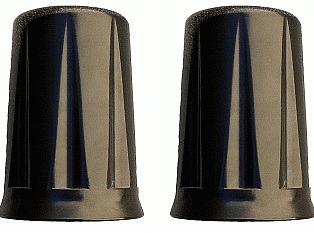
What Is an Antenna Preamplifier?
An antenna preamplifier is a device designed to boost weak TV signals before they reach your tuner or receiver. It is installed near the antenna to amplify the signal right at the source, reducing the loss that occurs as the signal travels through the coaxial cable. By increasing the signal strength, a preamplifier helps improve the clarity and reliability of over-the-air (OTA) broadcasts, improve wifi signal.
How Does an Antenna Preamplifier Work?
TV signals weaken due to long cable runs, obstructions, or interference from other electronic devices. An antenna preamplifier counteracts these losses by amplifying the weak signals before they are transmitted through the cable. Unlike a distribution amplifier, which is used to distribute a signal to multiple TVs, a preamplifier strengthens the signal before it encounters any degradation.
Benefits of Using an Antenna Preamplifier
1. Enhanced Signal Strength
If you live in a rural or remote area where TV signals are weak, a preamplifier ensures a stronger and clearer reception.
2. Improved Picture and Sound Quality
A better signal means fewer pixelated images, clearer sound, and an overall enhanced viewing experience.
3. Reduces Signal Loss
Long coaxial cable runs can lead to signal loss. A preamplifier minimizes this issue by boosting the signal right at the antenna.
4. Better Reception in Challenging Conditions
If you experience fluctuating signal strength due to weather conditions or nearby obstructions, a preamplifier can help stabilize your reception.
How to Choose the Right Antenna Preamplifier
1. Consider Your Location
Before purchasing an antenna preamplifier, determine how far you are from broadcast towers. If you live within 30 miles, a preamplifier may not be necessary. However, for distances greater than 50 miles, it can make a significant difference.
2. Check for Interference Issues
Some areas have high interference from FM radio stations or cell towers. In such cases, choose a preamplifier with built-in filtering to block unwanted frequencies.
3. Choose the Right Gain Level
Too much amplification can overload your TV tuner and cause signal issues. Opt for a preamplifier with adjustable gain or one that matches your signal needs.
4. Look for a Weatherproof Design
Since preamplifiers are installed near the antenna, ensure that the model you choose is weatherproof and durable to withstand outdoor conditions.
Installation Tips for an Antenna Preamplifier
Mount the Preamplifier Close to the Antenna – This minimizes the signal loss before amplification.
Use High-Quality Coaxial Cable – A good cable prevents unnecessary signal degradation.
Power the Preamplifier Properly – Most preamplifiers come with a power inserter that connects to an indoor power outlet.
Avoid Over-Amplification – If you experience distorted signals, try reducing the gain or switching to a lower-power amplifier.
Conclusion
An antenna preamplifier can significantly improve your TV reception by boosting weak signals and reducing interference. Whether you live in a rural area or face challenges with long cable runs, choosing the right preamplifier can make all the difference in your viewing experience. If you’re struggling with poor OTA reception, consider investing in a quality antenna preamplifier today!
#uhf vhf antennas#wifi antenna booster#vhf antennas#antenna development engineer#antenna design company#external wifi booster#improve wifi signal#vhf antenna#wifi signal enhancer#iridium external antenna
0 notes
Text
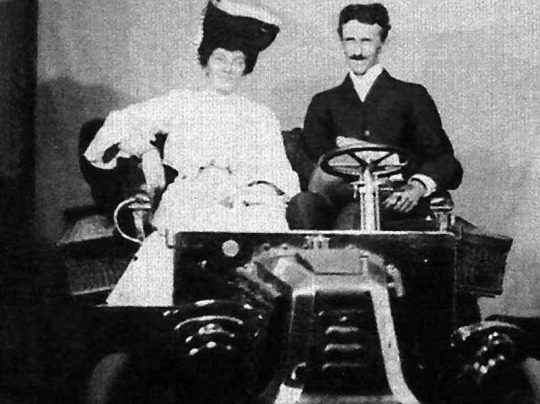
In 1931. Nikola Tesla unveiled and tested a new automobile. Tesla had developed it with his own personal funds. It was a Pierce Arrow, one of the luxury cars of the period. The engine had been removed, leaving the clutch, gearbox and transmission to the rear wheels undisturbed. The energy receiver (gravitational energy converter) had been built by Tesla himself. It was installed in front of the dashboard. A heavy antenna approximately 1,8 meters long, came out of the converter. This antenna apparently had the function as the one on the Moray converter (Radiant Energy !!!). "Now we have power." Nikola said… He said there was enough power in the converter to illuminate an entire house, besides running the car engine. The car was tested for a week, reaching a top speed of 90 mph (144.84 km/h) effortlessly. Somebody remarked that there were no exhaust gasses coming from the exhaust pipe. Nikola Telsa answered "We have no motor."
21 notes
·
View notes
Text
Oh right, I forgot I made reference sheets of my
Krang OCs!
That's right! A species of aliens from my favorite media, RoTTMNT, is one of my favourites, and thus has a bunch of OCs from the species! Only four of them are really developed, and I'll introduce you to them!
(Ignore the height measurements where I mention the turtle brothers, because it's now outdated! This is also a very big post, so there's a lot of text, and even in some of the images too.)
Now let's get introduced to... Petrol!
(2023 April 7th)
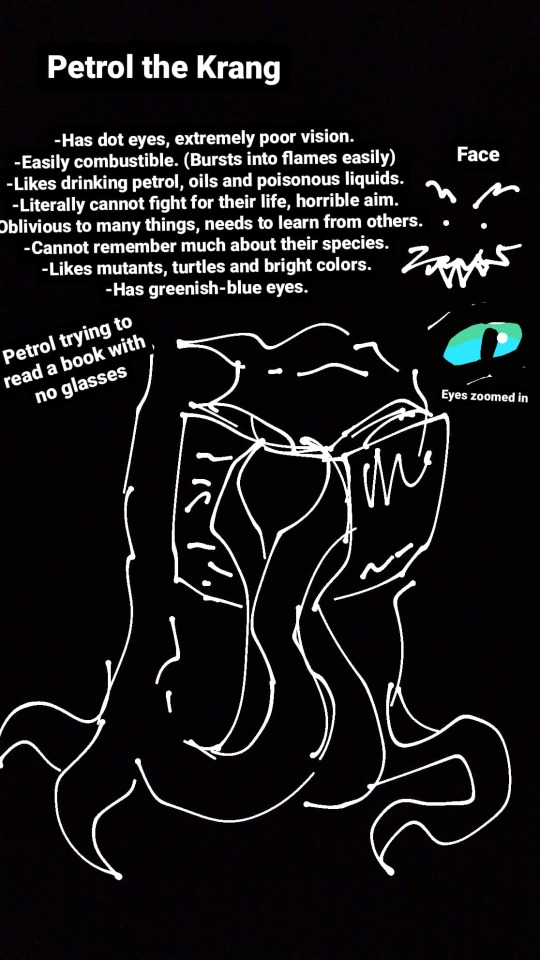
Right, he looks more or less... Basic for a Krang at this stage. I have developed them way more now!
(2023 April 9th)
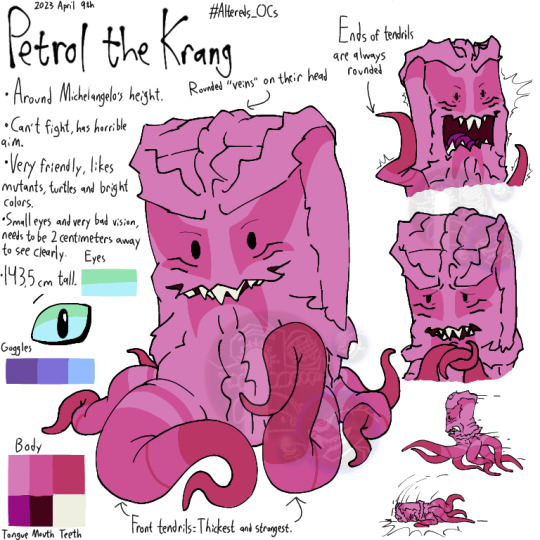
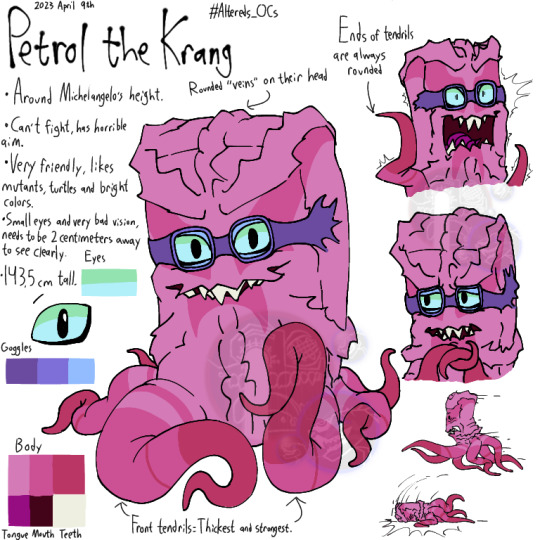
Now there he is! A young Krang with a kind heart, he isn't much of a threat like a singular Krang, but he's a swimmer! A formidably quick one too, and CAN fight while swimming, though their vision is unfortunately so bad they see the clearest at 2 centimetres away, almost one inch vision! Which is why he has goggles whenever he typically goes out to explore.
As he grew up within multiple generations of his raccoon family, he slowly forgot more about the Krang species, and because he was very young when the Krang were sucked in the Prison Dimension. He also gained markings resembling a raccoon's and is able to communicate with raccoons fluently. Yes, Petrol is capable of chirping, growling, barking and hissing, like an actual raccoon does.
Oh, and the easily combustible part? He pretty much combusts into flames whenever he gets scared. Mostly because he digests a lot of oils and gasolines, the perfect ingredients for bursting into flames.
"Where is his exosuit?", you may ask. Well, back when he narrowly escaped from being sucked in along the many other Krangs, he just abandoned his own exosuit, and in return being destroyed in the Prison Dimension from the chaos that happened where only three Krangs managed to survive from the aftermath. Now he has a custom one, made by none other than Nix. Or Kaos as an alternative.
(2023 April 8th)
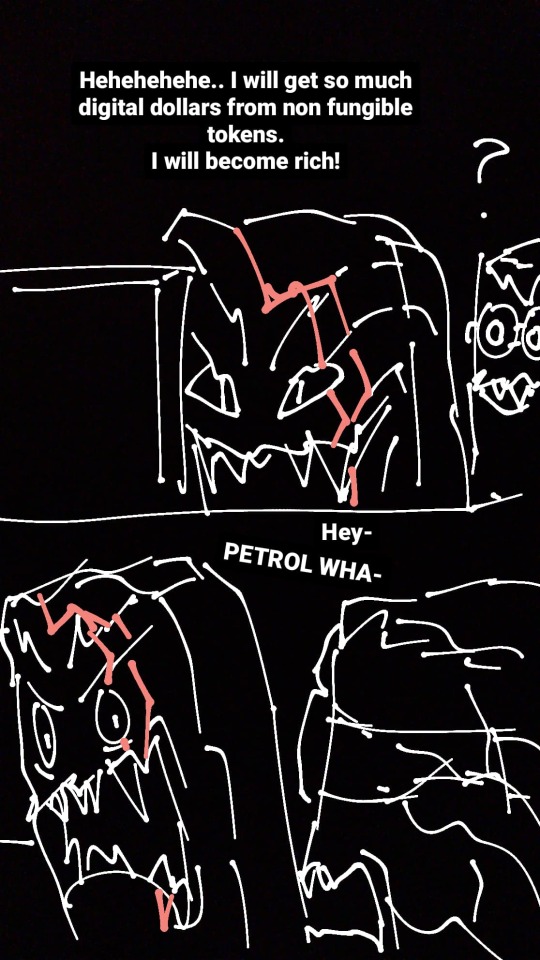
No, wait, this is the wrong Nix.
There they are!
(2023 April 11th)
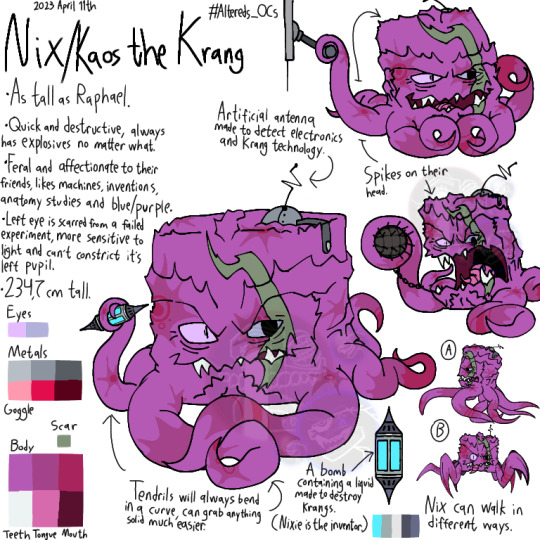
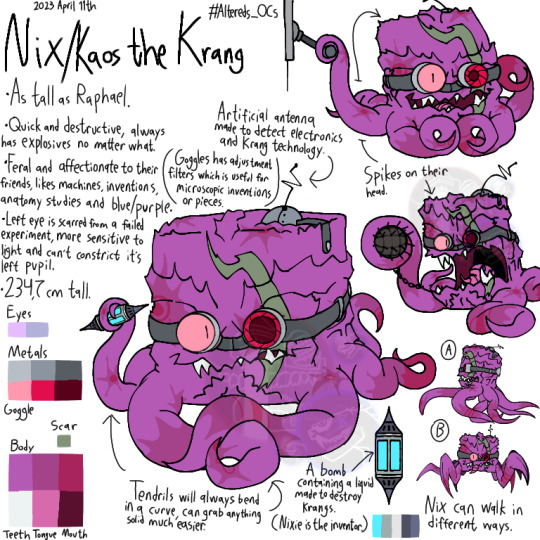
As expected and obvious from their looks, Kaos is the inventor of the four Krangs. Oddly enough, he distances himself a LOT from Krang technology, to the point he would only use that technology only if necessary. Quite a feral yet impish Krang, they love to bring their explosives with them no matter if it's a mission or any relaxing activities. And no wonder they made the bomb 💣 (Uxitron or UX∅3) by themselves, as they like inventing! They've made customized exosuits, machinery, weapons, and never forget, the littlest things like their own goggles, the artificial antenna they added in their own head and bombs.
They invent so much and experiment things, though sometimes not all of it was a success. Because of one failed experiment exploding into pieces, Kaos gained a permanent and thick scar on their face, especially affecting their left eye to the point it cannot constrict no matter the lighting conditions. Essentially, Nix has mydriasis in this case. In order to make it easier for themselves while working, they made goggles which both the lenses are adjusted with filters in order to allow them to see microscopic bits and inventions more easily, as well as controlling the amount of light that enters in the left goggle.
Despite their markings resembling explosions, one of them resembles a flower. A time where they first lived on Earth. They love hills covered in pretty flowers, and even still loves them, as they have pots and vases of plants in their shared home. Not in their own laboratory, of course.
Back when they used to be apart of Krang 01's/Leader's army, they admired him to such an extreme extent that they would do ANYTHING to please him, make him satisfied with their own actions despite not being seen as anything but an engineer. But nowadays they haven't forgotten Krang 01/Leader entirely, but doesn't even bring him up in a conversation other than to mention how they used to admire him.
Who else would be quite disappointed for Nix to admit they used to admire Krang 01/Leader?
Vemirath, or Ven for short.
(2023 April 11th)
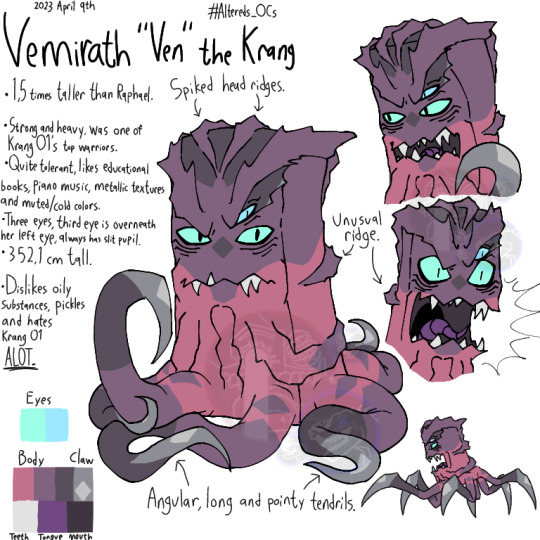
A powerful and formidable ex-warrior, Vemirath is NOT someone you should underestimate. She isn't feared for no reason by her opponents. She can clearly pin down her opponents who are almost the same size like her, as well as tear open buildings with ease. Despite this, like a rattlesnake, she also has a tender side of herself despite struggling to show emotions other than anger. She is a primary caretaker of Petrol, as well as his role-model. She cares deeply for her allies and family, but does she spare some for Krang 01/Leader?
None. She would find it better if she could've killed him with her own tendrils, tear him apart and stab him repeatedly. If she wished something to never exist in the universe, she would immediately say Krang 01/Leader with no hesitation. The only other thing she dislikes heavily are pickles. Pickles. 🥒 How? It reminds her of Krang 01/Leader for some reason.
And to talk about her third eye, it has miosis. Constantly a vertical slit, not even dilating at all. It doesn't improve her vision and visual depth too much other than a slight change. It's not much of a bother for her either, so she still kept it even when she was young.
It was clear Krang 01/Leader didn't like her much either, so it was a mutual feeling, though Ven's was more extreme.
The only one who managed to reach Krang 01's/Leader's ranks and role is Forth.
(2023 April 15th)
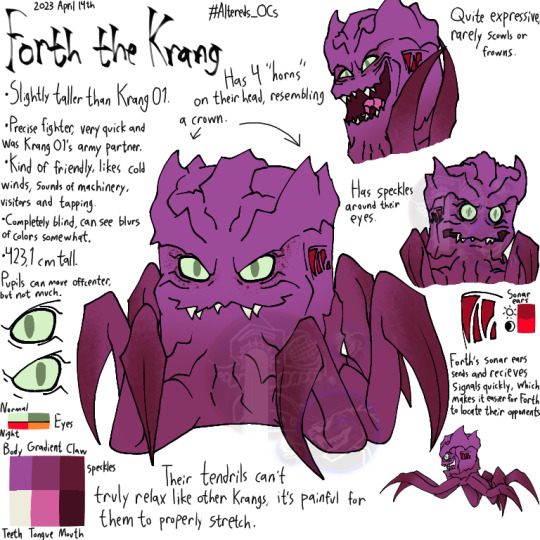
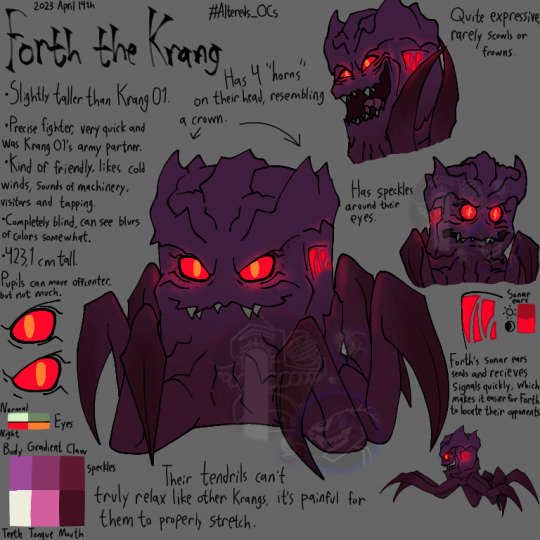
Despite being blind, she has sonars implanted on the sides of her head, allowing her to see her surroundings in a way she never had done before.
This made her more formidable, even as she is a very quick fighter. She can now be more precise in fighting her opponents and targets, yet smart enough to act like she can only hear, not "see" her surroundings. She clearly is strong after all, and has a lot of potential for her future in the army.
Despite being the highest rank of most Krangs, she loves getting herself into dangerous situations, as it's thrilling for her but also a bit more exciting than being a potential leader together with Krang 01/Leader. But the stress and concentration she tried to muster in order to focus more better has made her tendrils unable to relax naturally like others, always in a similarly jointed shape. It hurts for her to truly straighten her limbs, even if they're quite flexible.
She is also a constant smiler, rarely frowning at all mostly because she feels more relaxed smiling.
Even while she is the one who frequently explores and encounters more living beings than her fellow family (excluding Petrol), she still likes being in Nix's laboratory, listening to the machines working and moving to function. She finds the sounds relaxing.
(2023 April 17th)
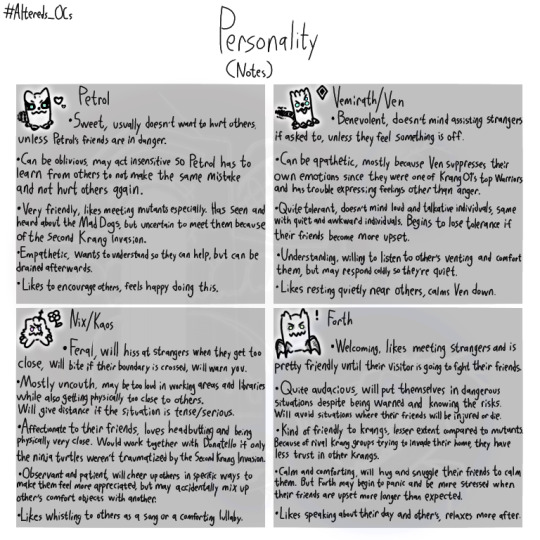
Here are some personality notes for my characters in case you write them! Unfortunately I do not know how to properly write dialogue, so you can pretty much feel free to write dialogue in a way that you think could fit them!
More information the better!
Unfortunately I can't add any more images, BUT I can write even MORE information! So here is incoming bonus information for the four Krangs!
Petrol: He would absolutely adore being around Michelangelo, as he's the bubbliest, friendly and loveliest turtle he has ever met. He hasn't tried drawing before, but he will gladly practice together with Mikey!
Nix/Kaos: They are easily capable of fighting four opponents at the same time with a melee weapon. And he would love to work alongside Donatello with inventing things as well as blow things up for FUN!
Vemirath: She will slowly lose her patience and herself if you keep talking about Krang 01/Leader. She will snap if you dare say a word that implies or even means that you admire him. She would rather hear him say he's a gift rather than hear someone else think he's a good Leader or someone admirable.
Forth: She has a thing for Vemirath. (Not elaborating.)
And that's what I have for my Krang OCs!!
#alteredsart#alteredsreferences#krang oc#rottmnt oc#rottmnt krang oc#AlteredsOCs#AlteredsOCs_Petrol#AlteredsOCs_Nix/Kaos#AlteredsOCs_Vemirath#AlteredsOCs_Forth#rottmnt oc references#rottmnt original character#i love them#theyre my skrunklies
14 notes
·
View notes
Text




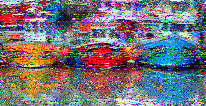

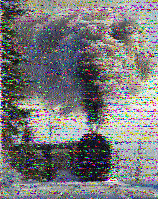



@swradiogram Thursday 1930 ET broadcast 9265 AM
t¼ aiÝSntgp Before RSID: <<2025-01-24T00:31Z MFSK-32 @ 9265000+1500>>
0iDiDts0 IOe hnypwsvmuTut F
Welcome to program 386 of Shortwave Radiogram.
I'm Kim Andrew Elliott in Arlington, Virginia USA.
Here is the lineup for today's program, in MFSK modes as noted:
1:41 MFSK32: Program preview (now) 2:51 MFSK32: NZ mayor objects to Trump 'split the atom' claim 5:35 MFSK64: NASA develops a 3D-printed antenna* 10:46 MFSK64: Images of the week* 27:40 MFSK32: Closing announcements
with image(s)
Please send reception reports to [email protected]
And visit http://swradiogram.net
We're on swradiogram.bsky.social now
And X/Twitter: @SWRadiogram
tnop tn
From AFP via Phys.org:
New Zealand mayor goes nuclear after Trump claims US 'split the atom'
January 21, 2025
A small town mayor in New Zealand has picked a nuclear fight with Donald Trump, after the freshly sworn-in US president heaped praise on American scientists for splitting the atom.
Trump's inauguration address rattled off a list of crowning American feats such as ending slavery, launching into space, and the moment they "split the atom".
The mayor of Nelson in New Zealand's South Island seized on the sub-atomic slight, pointing out that work to split the atom was actually pioneered by Kiwi-born physicist Ernest Rutherford.
"I was a bit surprised by new President Donald Trump in his inauguration speech about US greatness claiming today Americans 'split the atom' when that honor belongs to Nelson's most famous and favorite son Sir Ernest Rutherford," mayor Nick Smith wrote on social media.
Credited with splitting the nucleus of an atom during experiments at UK's Manchester University in 1917, Rutherford was "the first to artificially induce a nuclear reaction by bombarding nitrogen nuclei with alpha particles", Smith said.
He added that he would invite the incoming US ambassador to visit the Rutherford memorial in Nelson, population 50,000, "so we can keep the historic record on who split the atom first accurate".
Widely regarded as the "father of nuclear physics", Rutherford was awarded the Nobel Prize for Chemistry in 1908 for earlier work on radioactivity.
He remains one of New Zealand's most famous sons, and his face still adorns the country's $100 bill.
Shortwave Radiogram now changes to MFSK64 …
Eheoetv*:Rf0P ¾kg6P Before RSID: <<2025-01-24T00:35Z MFSK-32 @ 9265000+1500>>
uA¡O0dbghYiUalk e i-oi tkc ovC¯e)kwNæ itFooce1—oo ekn
This is Shortwave Radiogram in MFSK64.
Please send your reception report to [email protected]
NASA's 3D-printed antenna takes additive manufacturing to new heights
by Kendall Murphy, NASA January 22, 2025
In fall 2024, NASA developed and tested a 3D-printed antenna to demonstrate a low-cost capability to communicate science data to Earth. The antenna, tested in flight using an atmospheric weather balloon, could open the door for using 3D printing as a cost-effective development solution for the ever-increasing number of science and exploration missions.
For this technology demonstration, engineers from NASA's Near Space Network designed and built a 3D-printed antenna, tested it with the network's relay satellites, and 1 k~hÎ an on a weather balloon.
The 3D printing process, also known as additive manufacturing, creates a physical object from a digital model by adding multiple layers of material on top of each other, usually as a liquid, powder, or filament. The bulk of the 3D-printed antenna uses a low electrical resistance, tunable, ceramic-filled polymer material.
Using a printer supplied by Fortify, the team had full control over several of the electromagnetic and mechanical properties that standard 3D printing processes do not. Once NASA acquired the printer, this technology enabled the team to design and print an antenna for the balloon in a matter of hours. Teams printed the conductive part of the antenna with one of several different conductive ink printers used during the experiment.
For this technology demonstration, the network team designed and built a 3D-printed magneto-electric dipole antenna and flew it on a weather balloon. A dipole antenna is commonly used in radio and telecommunications. The antenna has two "poles," creating a radiation pattern similar to a donut shape.
Testing
The antenna, a collaboration between engineers within NASA's Scientific Balloon Program and the agency's Space Communications and Navigation (SCaN) program, was created to showcase the capabilities of low-cost design and manufacturing.
Following manufacturing, the antenna was assembled and tested at NASA's Goddard Space Flight Center in Greenbelt, Maryland, in the center's electromagnetic anechoic chamber.
The anechoic chamber is the quietest room at Goddard—a shielded space designed and constructed to both resist intrusive electromagnetic waves and suppreseo /gr emission to the outside world. This chamber eliminates echoes and reflections of electromagnetic waves to simulate the relative "quiet" of space.
To prepare for testing, NASA intern Alex Moricette installed the antenna onto the mast of the anechoic chamber. The antenna development team used the chamber to test its performance in a space-like environment and ensure it functioned as intended.
Once completed, NASA antenna engineers conducted final field testing at NASA's Columbia Scientific Balloon Facility in Palestine, Texas, before liftoff.
The team coordinated links with the Near Space Network's relay fleet to test the 3D-printed antenna's ability to send and receive data.
The team monitored performance by sending signals to and from the 3D-printed antenna and the balloon's planned communications system, a standard satellite antenna. Both antennas were tested at various angles and elevations. By comparing the 3D-printed antenna with the standard antenna, they established a baseline for optimal performance.
In the air
During flight, the weather balloon and hosted 3D-printed antenna were tested for environmental survivability at 100,000 feet and were safely recovered.
For decades, NASA's Scientific Balloon Program, managed by NASA's Wallops Flight Facility in Virginia, has used balloons to carry science payloads into the atmosphere. Weather balloons carry instruments that measure atmospheric pressure, temperature, humidity, wind speed, and direction. The information gathered is transmitted back to a ground station for mission use.
The demonstration revealed the team's anticipated results: that with rapid prototyping and production capabilities of 3D printing technology, NASA can create high-performance communics ion antennas tailored to mission specifications faster than ever before.
Implementing these modern technological advancements is vital for NASA, not only to reduce costs for legacy platforms but also to enable future missions.
it d7pwte2
Image»l3D-printed antenna mounted to a ladder prior to testing at NASA's Columbia Scientific Balloon Facility in Palestine, Texas …
ttt& txtnáeSending Pic:133x201C;
This is Shortwave Radiogram in MFSK64.
Please send your reception report to [email protected]
This week's images …
? n n
"A joyful discovery in Vondelpark Amsterdam" photographed by artist Robin Rimbaud. https://tinyurl.com/26ygxofu …
xotnnk Sending Pic:130x241C;
tktsaru
A worker arranges dried incense sticks near Hanoi ahead of Lunar New Year celebrations, known in Vietnam as Tet. https://tinyurl.com/24bmhnvg …
R qn Sending Pic:181x191C;
rieu n½tn
A steam train travels through the Harz forest to the top of Germany's Brocken peak, January 13. https://tinyurl.com/2y6bkzoc …
tW ' qr Sending Pic:158x199C;
stR e mZpeu
A snow covered tree on Loch Achall near Ullapool, Scotland. https://tinyurl.com/23yukzos …
Net Ht Sending Pic:168x194C;
2hua
Fishing boats in Dunbar, Scotland. https://tinyurl.com/23yukzos …
Üdur:ru Sending Pic:206x106C;
Rtn
Skiing on Bourbon Street during the recent unusual snow in New Orleans. https://tinyurl.com/2ysa7wom …
aHd gMt Sending Pic:151x200C;
ttD
A poinsettia as it appears in its native habitat of Mexico and Central America, growing in the conservatory of the Minnesota Landscape Arboretum. https://tinyurl.com/2crwl3ja …
VrZt bRSoeSLg Pic:195x156C;
tRW
A narrow gauge railroad in Forest Park, Ma , Oregon, January
It's out of service, but there is a campaign to revive it. https://x.com/Myles_Younger/status/1881105146878521367 …
aòyA Sending Pic:151x204C;
tnoZt
Our painting of the week is "Fleurs" (1952) by Nicolas de Staël (1914-1955). https://tinyurl.com/2atd89sr …
tJoi 3Z ÷ Sending Pic:158x236C;
nQzR tn
Shortwave Radiogram returns to MFSK32 …
vfnIo°¢R Before RSID: <<2025-01-24T00:57Z MFSK-64 @ 9265000+1500>>
This is Shortwave Radiogram in MFSK32 …
Transmission of Shortwave Radiogram is provided by:
WRMI, Radio Miami International, http://wrmi.net
and
WINB Shortwave, http://winb.com
Please send reception reports to [email protected]
And visit http://swradiogram.net
X/Twitter (for now): @SWRadiogram
I'm Kim Elliott. Please join us for the next Shortwave Radiogram.
x©ti¦tGb- 5 o e-äQetrnj tng
2 notes
·
View notes
Text

French AASM Hammer Bomb Spotted On Ukrainian MiG-29
March 18, 2024 Troubled Areas, War in Ukraine
Ukrainian MiG-29 AASM
Ukrainian MiG-29 carrying an AASM guided bomb. (Photo: unknown author via @Osinttechnical)
Few months after it was announced, we now have visual confirmation of the guided bomb being employed by Ukrainian MiG-29s.
An image of a MiG-29 of the Ukrainian Air Force, armed with a French-made AASM Hammer guided bomb, emerged online few days ago. The photo represents the first visual evidence of the weapon being used in the country after both Ukraine and Russia claimed the weapon was being employed earlier this month.
The image comes after French President Emmanuel Macron announced in January 2024 that the country will supply Ukraine with 50 AASM bombs per month and a total of 40 additional SCALP missiles throughout 2024. The deliveries reportedly started immediately after the announcement, but only this month the first use of the weapon was reported.
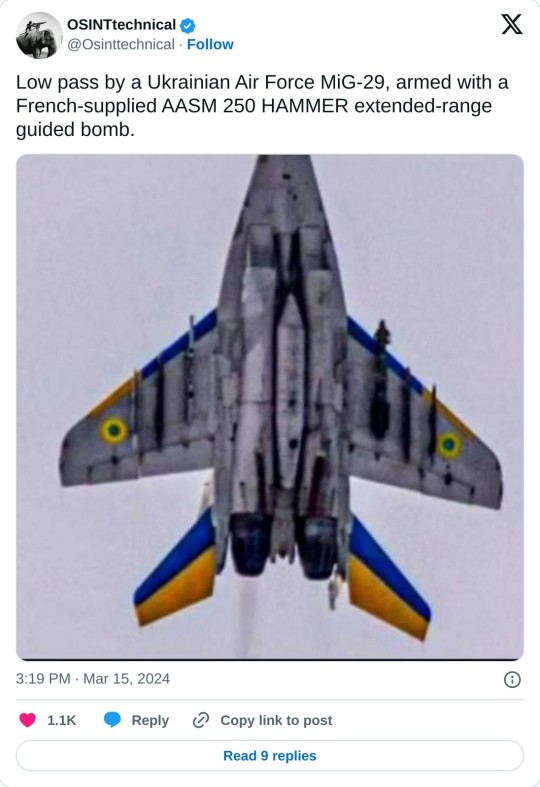
In particular, the commander of the Ukrainian Air Force, Lieutenant General Mykola Oleshchuk, published the UAV footage of what was claimed as the first AASM strike, as well as an image of a 250 kg AASM bomb with a writing in Cyrillic saying “For the children of Odesa. With hatred, without respect”. Shortly thereafter, Russian officials claimed that they intercepted and shot down an AASM bomb.
The AASM “Hammer” (Armement Air-Sol Modulaire “Highly Agile Modular Munition Extended Range”) is a kit, consisting of a nose guidance section and a tail range extension kit, that can be applied to 250 kg and 1000 kg bombs (125 kg and 500 kg variants are under consideration). The kit is offered in three variants: inertial and GPS guidance, GPS, inertial and laser guidance, and SBU-64 GPS, inertial, and infrared guidance.
The weapon can be employed day or night, under all weather conditions, at stand-off ranges which can reach over 70 km when launched from high altitude. The AASM can also be employed effectively at low altitude (with Safran saying it can still reach stand-off ranges) and highly off-axis respect to the target, and has the ability to perform precision vertical strikes, much like many missiles’ top-down attack capability.
The weapon has been fully integrated on the Rafale, while it has been integrated as stand-alone system on the Mirage 2000, Mirage F1 and F-16. Because of this, it was expected that the AASM would be used by the F-16 once delivered to Ukraine. Instead, the weapon is being already employed by the MiG-29.
While the quality of the photo doesn’t allow to discern details, it appears that the AASM is possibly being used in conjunction with the same pylon developed to carry the JDAM ER bombs already delivered to Ukraine. For the JDAM ER, in fact, a special pylon was developed with an extension forward of the bomb attachment points, possibly housing an antenna or an emitter of some kind.
About Stefano D'Urso
Stefano D'Urso is a freelance journalist and contributor to TheAviationist based in Lecce, Italy. A graduate in Industral Engineering he's also studying to achieve a Master Degree in Aerospace Engineering. Electronic Warfare, Loitering Munitions and OSINT techniques applied to the world of military operations and current conflicts are among his areas of expertise.
@theAviationist.com via X
12 notes
·
View notes